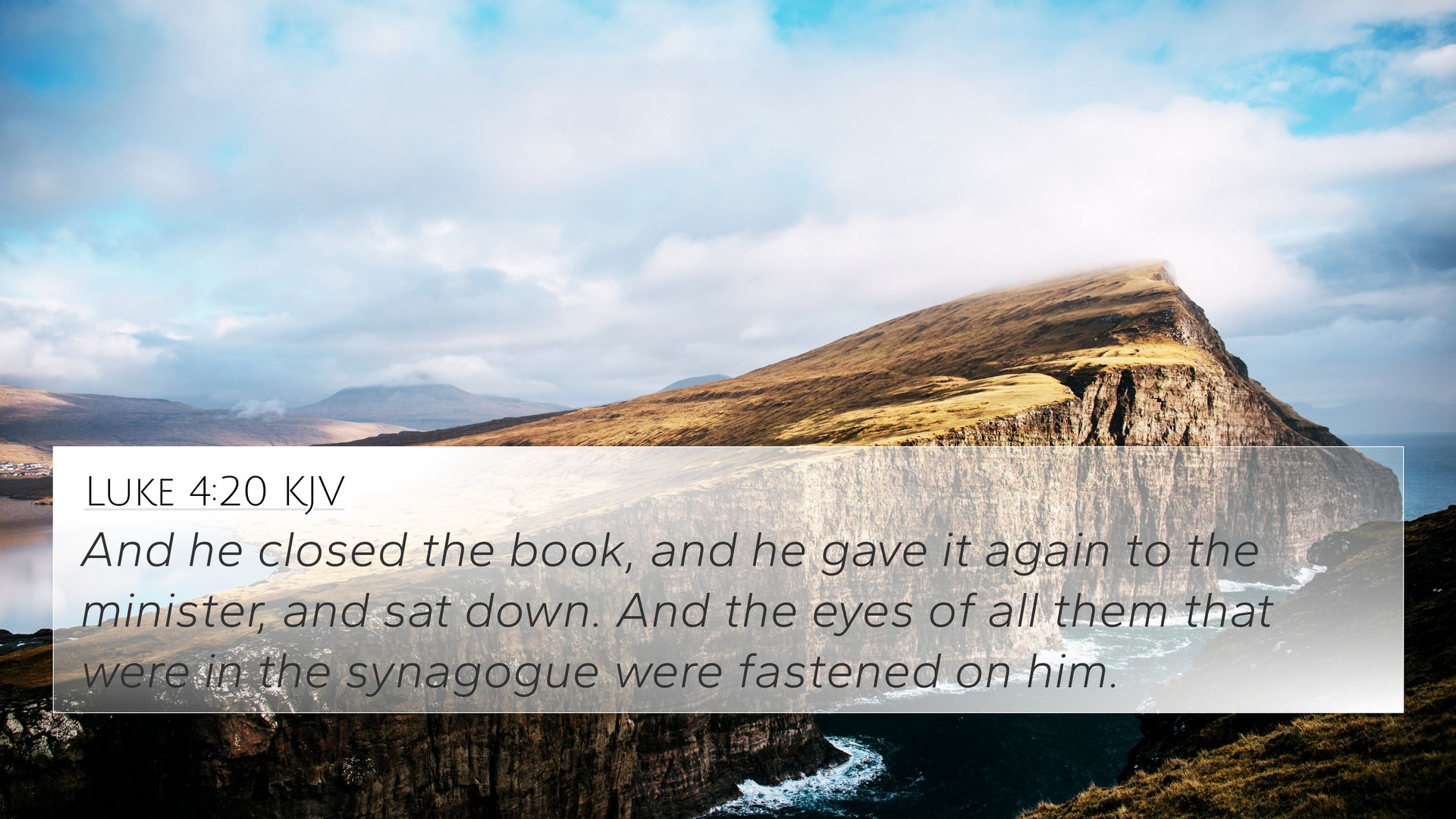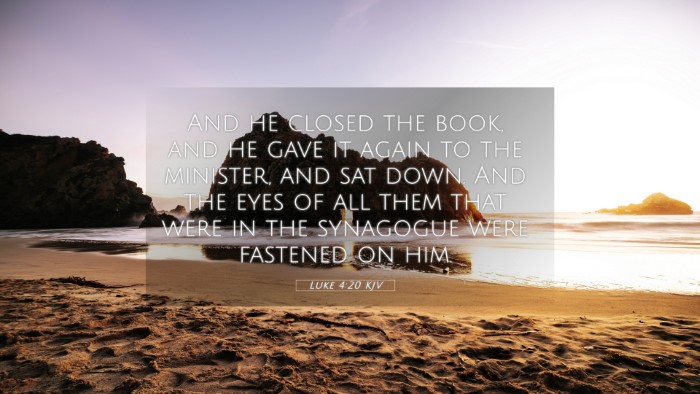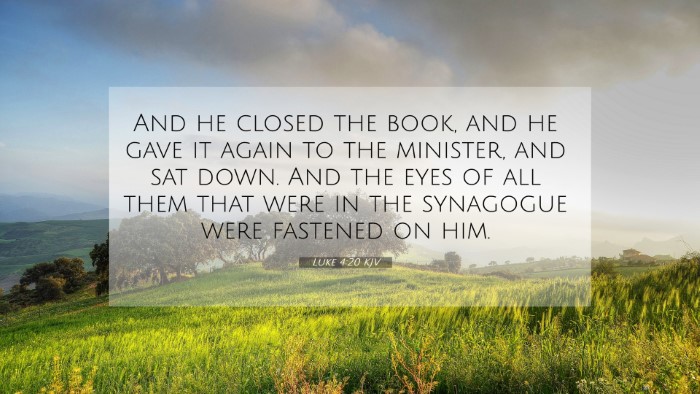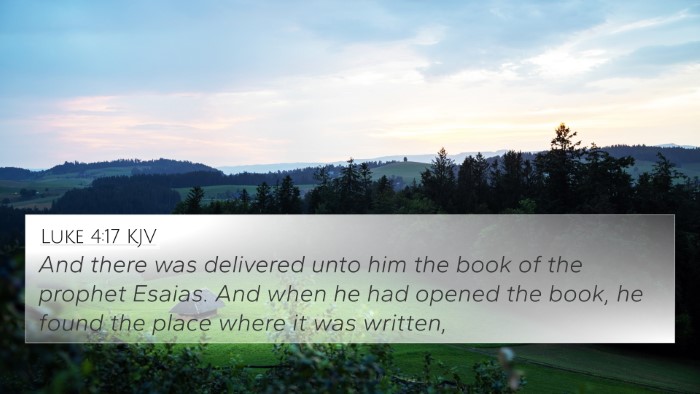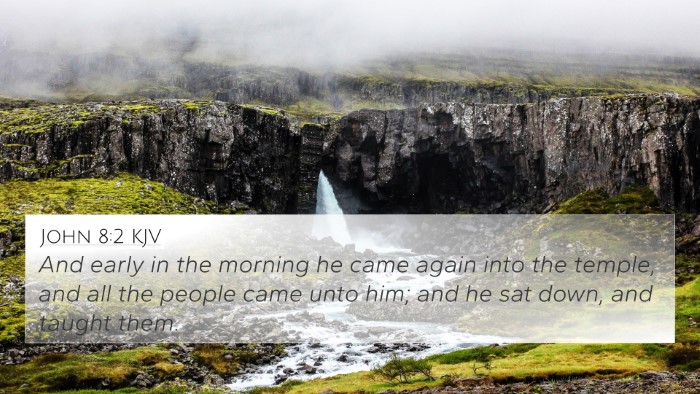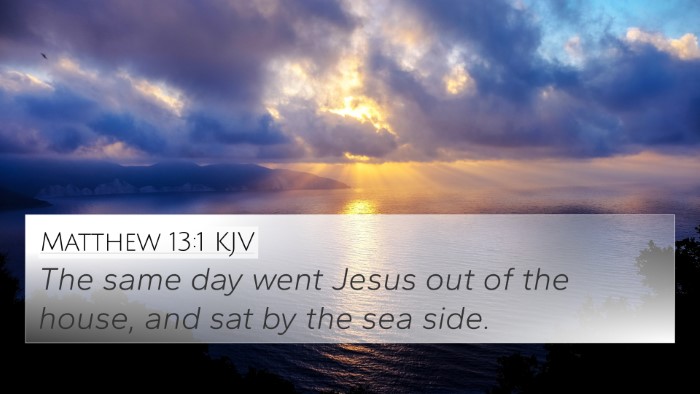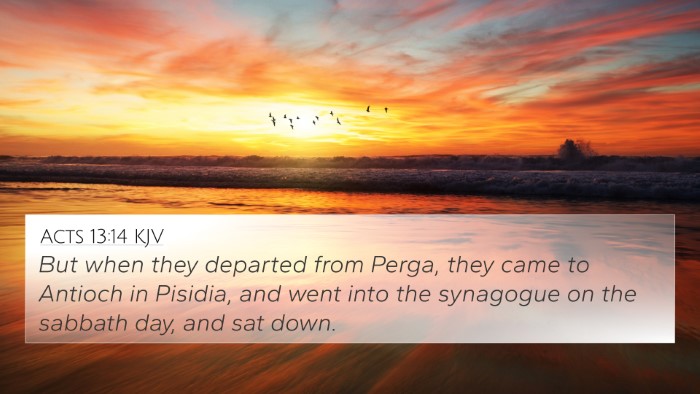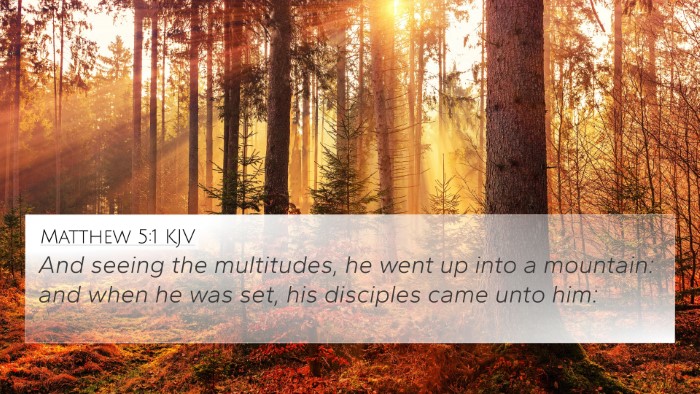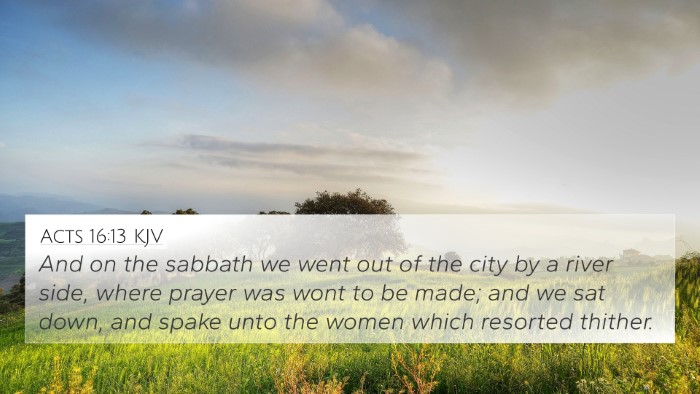Understanding Luke 4:20
Verse: Luke 4:20 states, "And He rolled up the scroll, gave it back to the attendant and sat down; the eyes of all in the synagogue were fixed on Him."
Contextual Background
In this verse, Jesus has just read from the scroll of Isaiah, declaring the fulfillment of prophetic scripture. The act of rolling up the scroll symbolizes the completion of His reading and introduces the critical moment of revelation—when the Messiah stands before the people.
Insights from Public Domain Commentaries
-
Matthew Henry:
Henry emphasizes the authority of Jesus as He reads the Scripture, illustrating that the act of sitting down after reading signifies His role as a teacher. The reaction of the people, fixated on Him, indicates a sense of anticipation and divine authority.
-
Albert Barnes:
Barnes explains that the attention of the congregation highlights their recognition of Jesus’ profound claim through His reading. The act serves as a pivotal depiction of Jesus' ministry and His fulfillment of Old Testament prophecy.
-
Adam Clarke:
Clarke points out that by sitting down, Jesus indicates the completion of His formal reading. His seated position in rabbinic tradition indicates the start of His teaching phase. The fixation of the audience’s gaze underscores their intrigue and concern at the implications of His message.
Thematic Elements
This verse embodies several key themes:
- Authority of Christ: The reading and subsequent actions of Jesus affirm His divine authority, allowing Him to interpret and fulfill scripture.
- Fulfillment of Prophecy: The reference to Isaiah serves to connect Jesus’ mission with the prophetic messages of the Hebrew Scriptures.
- Response to Divine Revelation: The congregation's fixation on Jesus’ actions symbolizes the human response to divine truth and revelation.
Cross-References and Related Verses
Luke 4:20 is connected to several significant Bible verses, contextualizing its meaning:
- Isaiah 61:1-2 - The foundation of Jesus' reading and declaration of His mission.
- Matthew 5:17 - Jesus’ relationship to the Law and the Prophets, affirming the continuity of scripture.
- John 1:45 - The recognition of Jesus as the one spoken of in the Old Testament.
- Hebrews 1:1-2 - The contrast of God’s revelation through prophets versus His final word through Jesus.
- Acts 8:32-35 - Philip's explanation of Isaiah's prophecy in relation to Jesus.
- Luke 2:34 - Simeon's prophecy about Jesus' role in Israel, hinting at His significant mission.
- Mark 1:15 - Jesus’ announcement of the Kingdom, correlating with the prophecies He fulfills.
Application and Reflection
The profound implications of Luke 4:20 ripple through biblical interpretation, inviting believers to reflect on Jesus as the fulfillment of prophecies and the embodiment of divine truth. Understanding this verse and its context enhances one’s study of scripture, allowing for a richer grasp of the connections between Bible verses and themes.
Tools for Cross-Referencing
For further study and exploration, consider utilizing the following tools and methods:
- Bible Concordances - To identify verses that relate to specific themes or words.
- Bible Cross-Reference Guides - These guides can assist in discovering connections across the canon.
- Systematic Bible Study Resources - Employed to conduct comparative analyses of various texts.
- Online Biblical Software - Platforms that support cross-referencing and thematic studies.
- Personal Study Journals - To note connections found during meditation and prayerful reflection.
Conclusion
In conclusion, Luke 4:20 encapsulates a moment of clarity where Jesus proclaims His role in accordance with the Scriptures. The engagement of the audience provides a paradigm for understanding how messages of faith and prophecy come alive through recognition and response. By engaging with the cross-referenced themes and utilizing available tools for study, believers can deepen their understanding of biblical connections and enrich their spiritual journeys.
